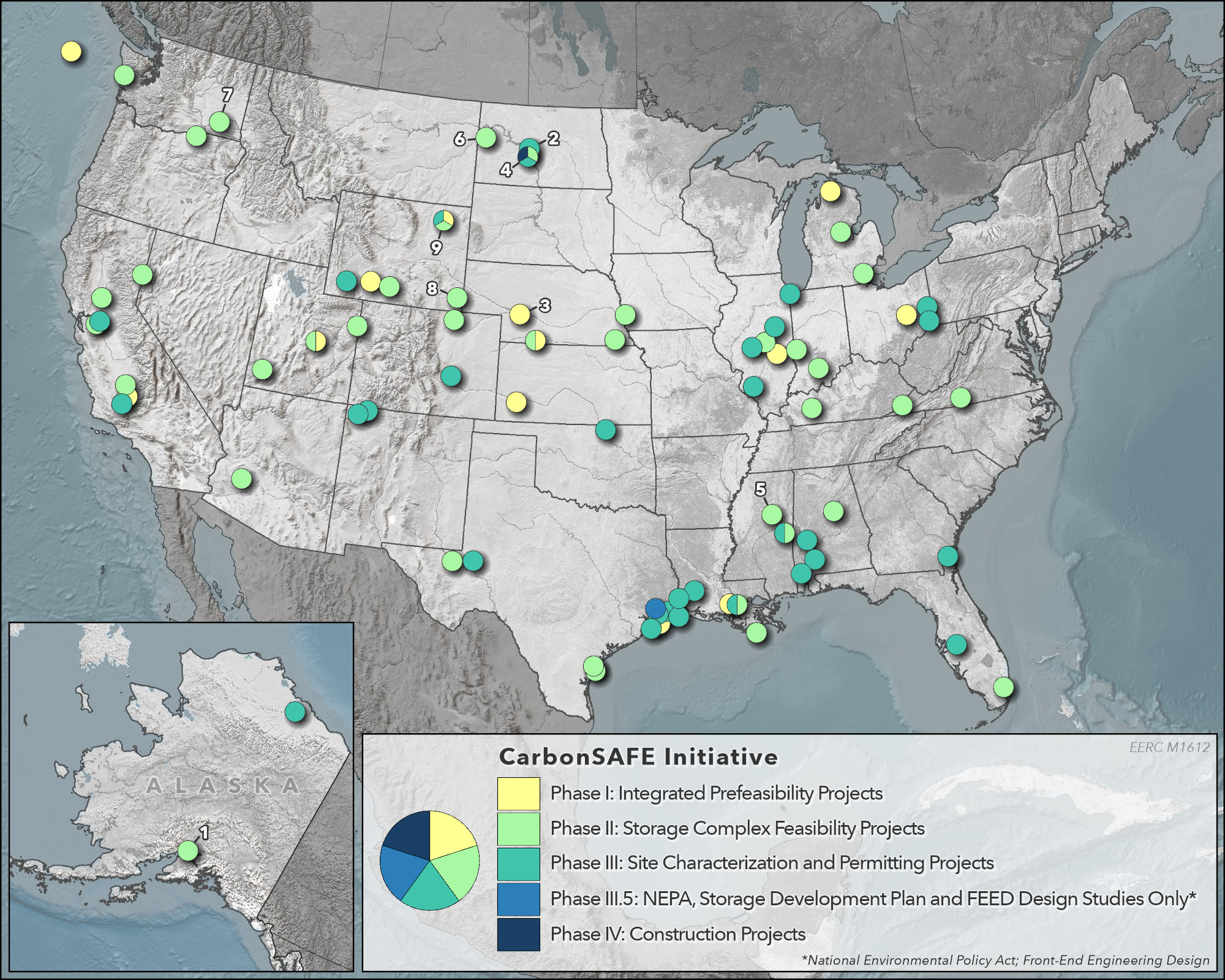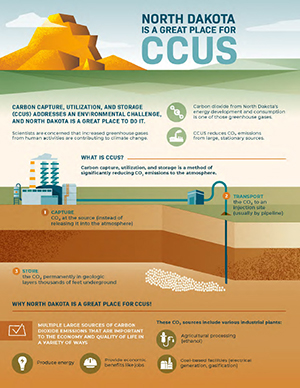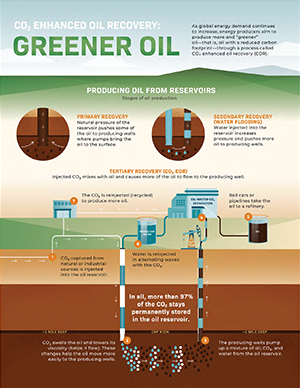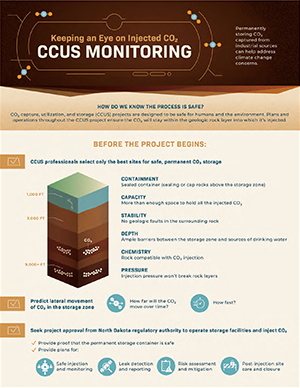CarbonSAFE
Demonstrating the Potential for Permanently Storing CO2
The U.S. Department of Energy’s (DOE’s) Carbon Storage Assurance Facility Enterprise (CarbonSAFE) Initiative projects focus on developing geologic storage sites for storing 50+ million metric tons of CO2 from industrial sources. Goals of the CarbonSAFE projects are to improve and optimize procedures related to 1) project site screening and selection, 2) site characterization, 3) baseline monitoring, and 4) subsurface monitoring. In addition, CarbonSAFE is looking to compile the information necessary to submit appropriate permits and design injection and monitoring strategies for commercial-scale projects.
The CarbonSAFE Initiative builds off the work done by the Regional Carbon Sequestration Partnerships to fund and develop projects ready for integrated carbon capture and storage (CCS) system deployment in the 2025–2030 time frame.
The Energy & Environmental Research Center (EERC) and its partners collaborate on CarbonSAFE projects as part of ongoing regional and national efforts to ensure reliable, affordable energy and advance the wide-scale commercial deployment of CCS.
Collaborative Projects
- Alaska Railbelt Carbon Capture and Storage (ARCCS) Project Phase II
- Coal Creek Carbon Capture: Site Characterization and Permitting Phase III
- Nebraska Integrated Carbon Capture and Storage Prefeasibility Study (Phase I)
- North Dakota CarbonSAFE Phase IV
- Red Hills CO2 Storage Hub (RHCSH) Feasibility Study Phase II
- Roughrider Carbon Storage Hub Phase II
- CO2 Storage Hub for the Inland Northwest Economy (SHINE) Feasibility Study (Phase II)
- Steamboat Carbon Storage Hub Phase II
- Wyoming CarbonSAFE Phase III
CarbonSAFE Phases
Phase I focuses on identifying and assessing suitable sites for safe, large-scale carbon storage. This stage involves evaluating the geological, environmental, and infrastructural feasibility of potential locations, including initial studies to understand storage capacity, integrity, and necessary regulatory steps.
Leveraging the success of the Plains CO2 Reduction (PCOR Partnership) activities, the EERC was able to bypass the CarbonSAFE Initiative’s prefeasibility phase (Phase I) for the North Dakota CarbonSAFE project and start at the feasibility study level (Phase II).
Completed Phase I projects include:
Nebraska integrated Carbon Capture and Storage Prefeasibility Study
UW CEGR WY CarbonSAFEProjects in Phase II focus on assessing the feasibility of safe, permanent CO2 storage through detailed investigations of subsurface geology, environmental and economic considerations, and regulatory frameworks.
Current Phase II efforts include:
Completed Phase II projects include:
Projects in Phase III focus on site characterization and permitting to establish safe, permanent, CO2 storage sites. Current Phase III work explores integrating storage solutions with existing energy infrastructure.
Current Phase III efforts include:
Completed Phase III projects include:
Projects in Phase IV focus on deploying large-scale CO2 injection and monitoring systems to demonstrate the safety and efficiency of permanent carbon storage. A key Phase IV initiative is North Dakota CarbonSAFE, led by DCC East Project LLC. The project involves characterizing deep geological formations near Minnkota Power Cooperative’s Milton R. Young Station, securing permits for CO2 injection and storage, and preparing infrastructure for full-scale carbon capture and injection. This project is part of Minnkota’s ongoing Project Tundra initiative, which showcases North Dakota’s advancements in sustainable energy solutions.
Frequently Asked Questions
Resources
Want to learn more about how we are driving innovation in CCUS research? Visit our Carbon Management page for insights into our leadership in advancing carbon storage and utilization solutions.
Learn More About CarbonSAFE





